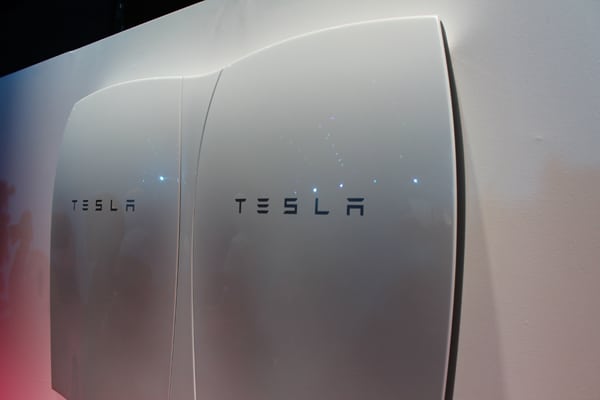Solar-Plus-Storage Could Increase Consumption and Emissions, Study Suggests
Pairing energy storage with rooftop solar photovoltaic (PV) systems has been widely touted as the path for greater deployment of renewable energy, but a new study from researchers at the University of Texas suggests doing so may actually increase overall energy consumption and emissions.
The study, “The Impacts of Storing Solar Energy in the Home to Reduce Reliance on the Utility, ” was based on data collected in 2014 by non-profit firm Pecan Street from 99 homes in the Austin, Texas, area with solar PV systems that were mostly in the 3-kW to 6-kW range. The homes did not have storage installed; rather, the study used operational data to estimate the impacts of adding it.
Two models were used, one (which the authors called “target zero”) that sought to keep the connection with the grid as close to 0 kWh as possible (in other words, minimizing both injections and demand), and another (called “minimize power”) that sought to maximize self-generation using forecast data for future demand and generation. The essential distinction was that the first model maximizes grid independence minute-to-minute, while the second maximizes it over the entire day.
Reduced Peak Demand But Increased Consumption
The study found that while both models were successful in reducing injections (5% and 42%, respectively) and aggregate peak demand (8% and 32%), total energy consumption actually increased. The mean annual increase was 338 kWh for the target zero model and 572 kWh for the minimize power model, equal to 8% and 14%, respectively, of the average annual net energy consumption of sampled households. The reason for this increase was the electricity losses incurred during charging and discharging of the battery.
The study also considered the economic impact on the homeowner under several currently existing electricity tariff systems in Texas, California, and Hawaii, and found that under none of them would the economic benefits of storage offset the up-front cost. Under current systems in Texas, the cost of home storage would need to fall below $100/kWh to become economic. That cost that is a fraction of current market prices, which are around $500/kWh to $2,000/kWh (Figure).

The added consumption from adding storage (which, the authors note, is more than offset by the reduced demand from adding the PV system itself) would also cause an increase in air emissions, though this will of course depend on the nature of the local grid.
“When storage operates under the ‘target zero’ mode, its mean emissions impact is 160 ± 7 kg CO2, 0.05 ± 0.02 kg SO2 and 0.05 ± 0.01 kg NOx per household per year,” the study notes. “When storage operates under the ‘minimize power’ mode its mean emissions impact increases to 290 ± 13 kg CO2, 0.16 ± 0.04 kg SO2 and 0.24 ± 0.02 kg NOx per household per year.”
Part of the problem with adding storage from an emissions standpoint, the authors found, is that it causes a shift in consumption toward hours of the day when solar PV systems—distributed and utility—are not generating, and the extra consumption is supplied in larger part by fossil fuels. Higher-efficiency batteries would mitigate much of the emissions impact, but it would require system efficiencies (>90%) that are beyond those of home storage batteries available on the market
Poor Solar-Plus-Storage Rate Structures
Storage industry experts have noted repeatedly that current retail rate structures are not well suited for storage, and the study indeed identified some rate structure quirks that resulted from adding storage to a home PV system.
The greatest economic benefits to the homeowner came where the tariff charged for consumption is higher than the feed-in tariff for solar power, but this essentially created an economic incentive for increased power consumption. However, because adding storage to a home PV system would also reduced demands on the distribution system, it creates an economic incentive for the utility to encourage its installation.
The authors suggested in a statement accompanying publication of the study that the environmental benefits of adding storage are less than often assumed.
“The good news is that storage isn’t required to make solar panels useful or cost-effective,” said co-author Michael Webber, a professor in the Department of Mechanical Engineering and deputy director of UT Austin’s Energy Institute. “This also counters the prevailing myth that storage is needed to integrate distributed solar power just because it doesn’t produce energy at night.”
One implication of the study is that at least until home storage batteries are less expensive and more efficient, the more economic and efficient approach is oversizing the PV system and sending excess power directly to the grid, an approach already being used for commercial and utility PV systems.
—Thomas W. Overton, JD is a POWER associate editor (@thomas_overton, @POWERmagazine).